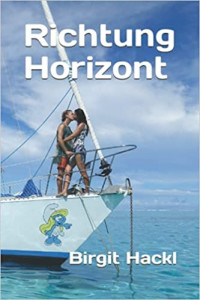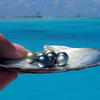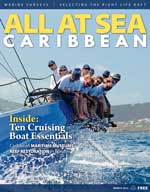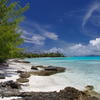We used to call anchorages comfy as long as the dishes didn’t slide off the table, but after spending so much time in protected lagoons we’ve raised our standards to ‘no boat movement at all’. Yesterday’s anchorage on the western side of Akamaru didn’t quite come up to those expectations, we complained a bit about the rolling during the night, but enjoyed our visit to the friendly village and a kayak tour along the west coast even more.
Today we sailed down to the three small, high islands in the very south of the archipelago for the first time. It was an astonishingly pleasant sail, almost calmer than the time in the anchorage before–Leeloo even went sunbathing out on deck. We passed the ragged islets Manui and Makaroa and when we arrived at our destination Kamaka, the American owner of the island (the only private island around here) hailed us on the radio, sounding quite glad to have visitors and explained where we could anchor. We were really tempted to stay, but watching the westerly swell wandering by, we chickened out despite the assurances of the owner that we’d picked an unusally calm day for visiting his island ![]() We had considered sailing over to Pitcairn recently (about 300 nm away), but now we know that we’re just too spoiled to brave anchoring basically on the open sea, next to that ragged rock, where the full force of the southern ocean slams into Bounty Bay…
We had considered sailing over to Pitcairn recently (about 300 nm away), but now we know that we’re just too spoiled to brave anchoring basically on the open sea, next to that ragged rock, where the full force of the southern ocean slams into Bounty Bay…








